The is our Montessori-Classical-Catholic-Lenten study of the Life of Jesus using the Mysteries of the Rosary as a starting point. Last week, I shared our Mysteries of the Rosary Sorting Activity (download directly on Teachers Pay Teachers). As a family, we have been using this activity to work on memorizing the Mysteries of the Rosary and other rosary “facts”. All of the cards are in the center of our dining room table, along with a basket of rosaries and if you show up at our house around the dinner hour, you might be subjected to a pop quiz on all things rosary. Our quizzing might include other subjects such as “How many Hail Marys would you pray if you prayed all four sets of mysteries?” or “How do you spell ascension?“. We include the younger kids by asking them “How to you say the first prayer in the rosary?”
As the age range of my children has grown and the differences in their abilities grown right alongside, it has gotten harder to do mixed age studies that truly include everyone. Our rosary projects, however, allowed us to take the framework of the rosary and implement a true multi-age study rooted in a combination of hands-on materials, memorization, and research.
Step 1: Group Presentation(s)
The Rosary is, at it’s core, a timeline of the life of Jesus. Of course not every event is included, but the major ones are. Using our picture cards from the Mysteries of the Rosary Sorting Activity, we laid out a timeline of Jesus’s life while naming the mysteries (shown on the left above). This presentation could be repeated several times focusing on naming of each mystery if you or your children are unfamiliar with the rosary mysteries. As the cards were already familiar to our family, we used one group presentation to physically organize the timeline. For more information on the importance of timelines as a core component of Montessori, see here.
Aidan (11) already knew that the mysteries could be laid out this way, but it was a special surprise for our younger ones. Almost like magic! After a group presentation, I assign individual work to use new information in an age-appropriate challenging way.
Step 2: Individual Follow-Up
The Lucie Group
The Lucie group would be defined as any child interested enough in sitting at the table and doing “big kid” work, with little (who am I kidding!) no ability to work on a project independently. Basically toddlers and younger preschoolers. My goal for this group is less about content, more about familiarity and comfort with the rosary in general, being a part of the group, and building motor skills. In the case of this project, we were working on gluing.
For Lucie, I simply stapled together 2 sheets of card stock cut in half to make a booklet. I gave her a stack of holy cards and Mary pictures and a glue stick to make her book. When she wasn’t stealing the pictures the other kids were using, or turning the glue stick into chapstick, we both enjoyed the project without too much chaos.
The Logan Group
The Logan group are your non reading preschoolers and kindergarteners. They aren’t likely able to memorize all of the mysteries independently, but they can learn to tell a short story about Jesus’ life using a few of the key events and sequence events that are provided for them. This project also works on their cutting and gluing skills. Due to the age and attention of this group, it is best to divide the work into sets of mysteries. You can do this by creating four books total or simply working on one set of mysteries each day until the project is finished.
Using the Mysteries of the Rosary Sorting Activity (see above), I printed the labels 4 pages to a sheet (your computer can do this automatically by selecting Layout on your print screen). Then each label was the perfect size to cut out. As images, we used a combination of existing holy cards/pictures and extra copies of our rosary sorting activity pictures. I helped with some of his cutting and laying out the pages. Depending on your child’s fine motor abilities, you can increase or decrease the amount of assistance you provide. While we worked we talked about the story again, emphasizing the various points in Jesus’ life.
The Kylee Group
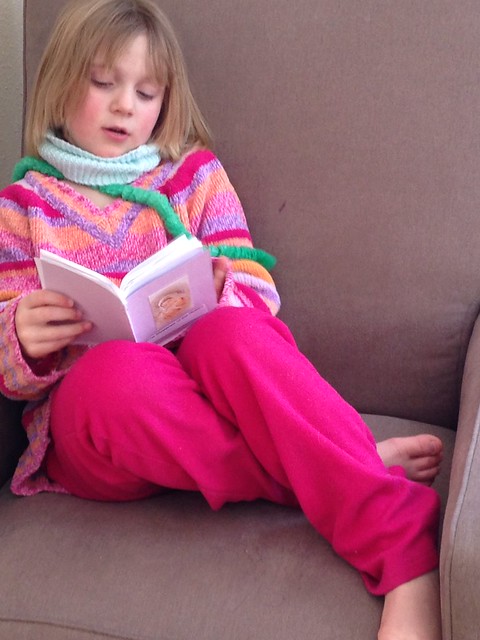
The Kylee group represents your reading kindergarten & lower elementary aged students. They are going to create the same project as the Logan group, with different aims. First of all, from a project standpoint, they should be able to complete the cutting, layout, and gluing mostly independently. I asked Kylee to lay out her pages one set of mysteries at a time so that we could “double check” them together before she started gluing. From a cognitive/learning/expectation standpoint, this group is definitely capable of memorizing the entire timeline (broken down by mysteries, or not, depending on your preference). Kylee was ready to tackle the entire project in one day, but many children this age may prefer to work on it in pieces.
The Caleb Group
The Caleb group represents your middle elementary students. They have lots of practice memorizing information, and can challenge themselves to present the information they know without as much support as the Kylee group still needs. For this group, instead of a directed booklet they will be making a timeline using the layout from the group presentation. This requires more recall of information than the booklet and is a step closer to fully independent research. It also focuses on the entire picture of the life of Jesus.
Because Caleb struggles with fine motor skills, I knew he would lose endurance and be unable to finish writing all of the mystery names leading to frustration. I did allow him to use the preprinted labels that Kylee and Logan used. You could go either way depending on your child. Instead of prepared pictures, however, I asked that he illustrate a few of the mysteries to add interest to his timeline.
Caleb being Caleb, all of those lines sequentially draw to the correct mystery sequence, but the mysteries themselves are glued in some sort of crazy order. He can read it. That’s what matters most.
The Aidan Group (& Older)
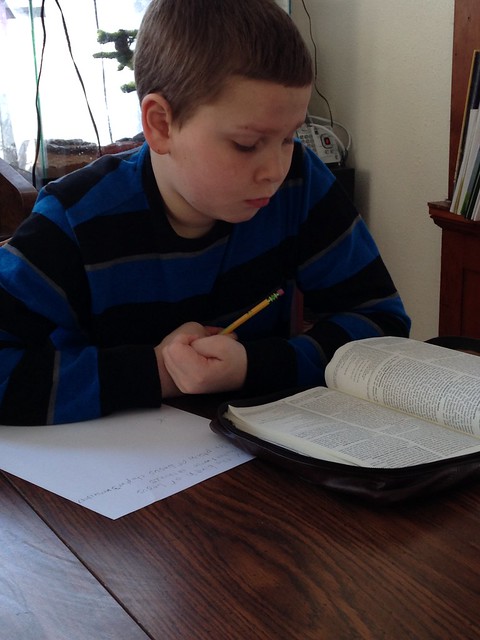
The Aidan group are your upper elementary and early middle school aged students. Those ones that are getting scarily close to adolescence and are thinking critically and able to do research and compose their own writing at least to the paragraph level. The reality of the Aidan group is that while the project assigned for this level was completely appropriate, reasonable, and even interesting it resulted in a bit of an eyebrow raise. From what I hear from other parents of this group, there are a lot of eyebrow raisers and eye rollers in the Aidan group. The good news for me is that (so far) my Aidan grouper is still exceptionally cooperative. He may tell me with his eyes that he thinks I’m crazy, but he usually goes ahead and does it anyway. So the project?
Find it.
Open the Bible and find the mysteries. I told him I didn’t need every reference to each mystery, but at least one for each. Alternatively you could select a set of mysteries or even just one mystery and find all of the references. There are of course books and website where this has already been done, so if you wanted to use this as an online type of research project it could be done that way as well. I prefer the good old printed version. Aidan laid his project out in a table format, but any format would really work. I like to let him start and come up with his own format for things like this and help him adjust if needed, but others may prefer to assign a particular format.
This may seem like a huge task, and it is, but think of it this way. What will make your heart sing louder than looking over again and again to see your 11 year old pouring through the pages of Sacred Scripture?
Final Thoughts
The reality is that each of these projects could be done individually or as a family. Perhaps you and your older child want to delve into the mysteries of the rosary more fully, together. You could start with the original sorting activity, move to the sorted timeline, then the booklet, then a written timeline, then finally create the scriptural index. This post could serve as the spine for an entire unit, rather than a one-day activity. There isn’t a right or wrong way to adapt these resources for use in your family. Many, many adults lack a solid understanding of the rosary (myself included at times) so delve into it all as a family and learn together!

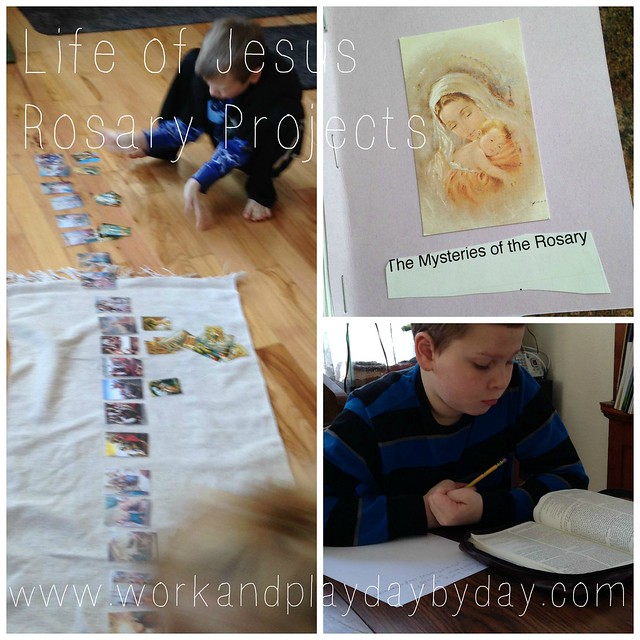
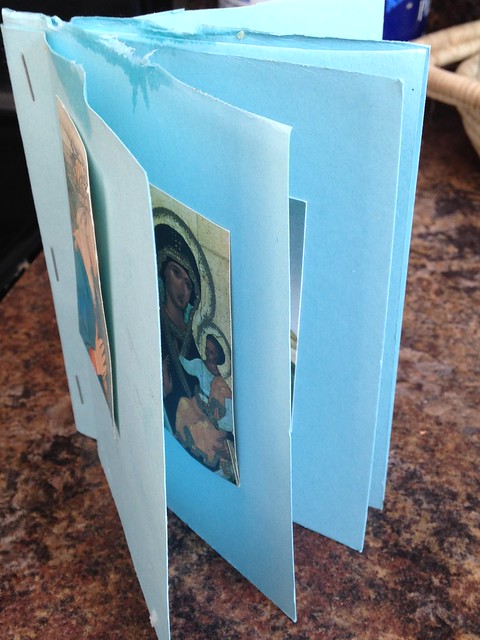
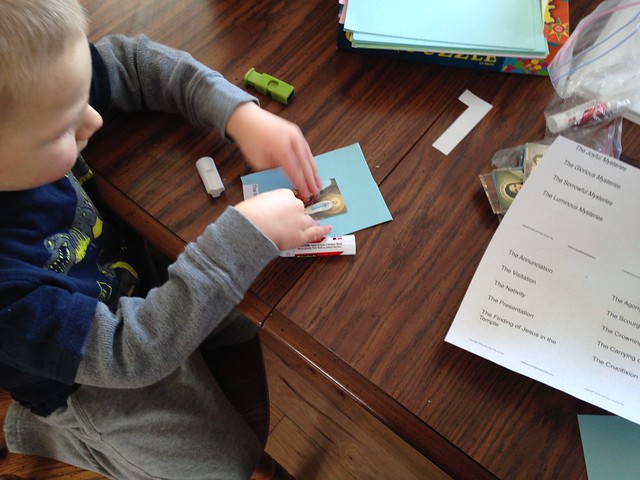
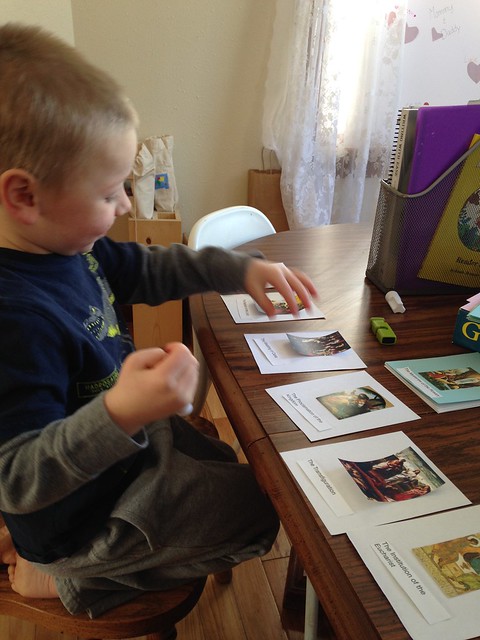
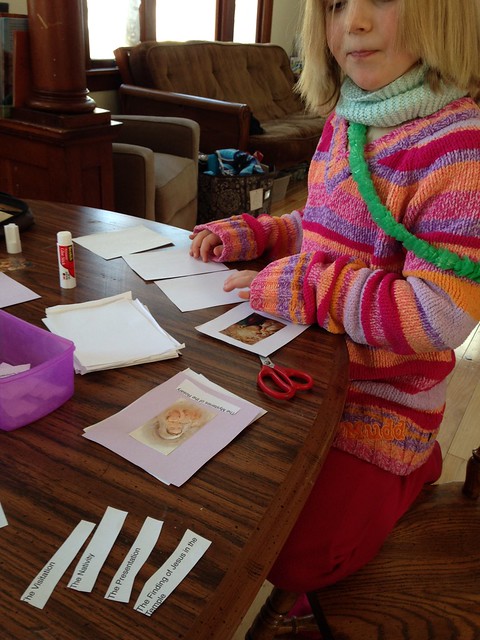
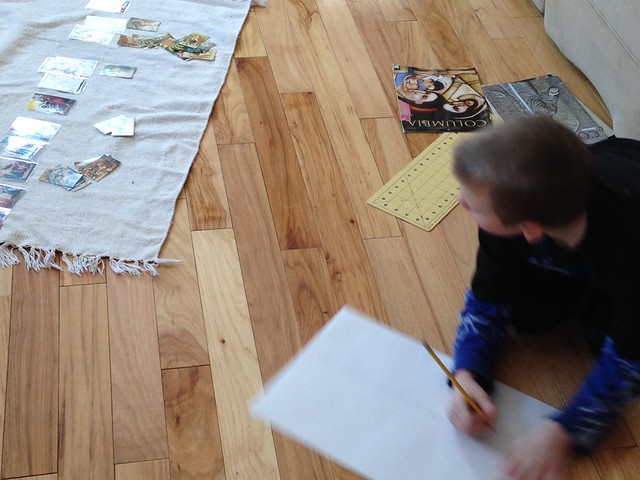

I could see adapting this for a family night for Religious Ed on the Mysteries of the Rosary!